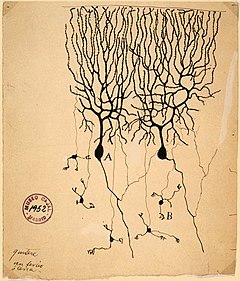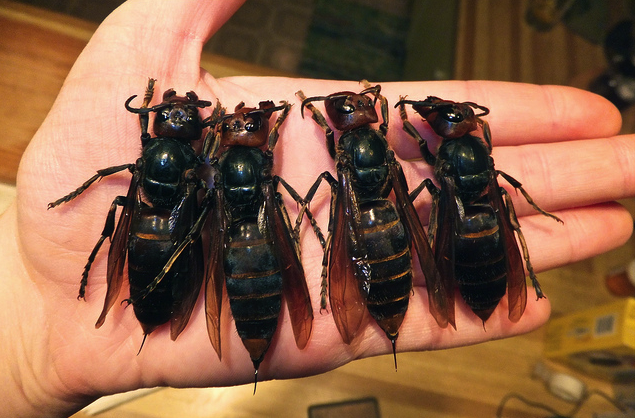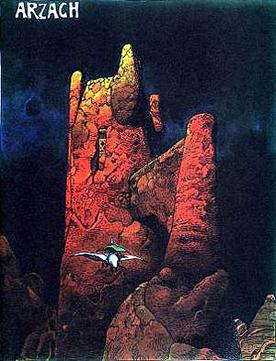
This is going to be a bit long and rambling. The nervous system is not only one of the more interesting innovations in living systems, it's a key discriminator between categories of animals. So we'll have to delve a little bit into taxonomy.
I think of taxonomy as great fun but there are those whose eyes glaze over at the mere mention of clades or kingdoms. I blame bad high school biology teachers.
But enough of that. Let's begin.
As of the last post we now live in a world of single celled prokaryotes, single celled eukaryotes and some multicellular organisms. Some of these are plant precursors, some are fungi precursors and some are animal precursors.
We could make a long and varied collection of posts involving the origin of plants, fungi and animals but we're not going to. Instead, I'm going to attack what I consider one of the salient characteristics of animals: nervous systems.
At the beginning let me be clear. We're talking about all nervous systems: collections of cells that use ionic biochemistry to carry signals across and between them. These are neurons. Brains came later.
So, it's important to first define our terms: what is a
neuron?
For once I'm going to quote wikipedia directly.
This is a pretty good definition:
"An electrically excitable cell that processes and transmits information by electrical and chemical signaling."
Signaling both within and between organisms and cells has a much longer history than neurons. As soon as cells emitted chemicals there were other cells that understood it. However, neurons are very different. The neuron has a fundamental component architecture:
- axon: neuron strand that is electrically excitable and carries information to another cell
- dendrite: section of the neuron that is not electrically excitable but receives signals from another cell's axon
- synapse: gap between the axon and dendrite where the electrical information is converted to chemical compounds (a neurotransmitter) that cross the gap and cause an electrical potential to occur in a dendrite.
"Excitable" in this context means the cell reaches a certain electrical potential which triggers a chemical and electrical reaction that can propagate across the cell and down the axon.
So, you have our example cell with a dendrite at one end, a cell body and the long thread of an axon leading away from it. At the far end of the axon is the synapse. On the dendrite of our cell are a bunch of synapses from the axons of other neurons. The dendrite is not excitable. The axon is.
An neuron fires and carries a nerve impulse down the axon to a synapse. This synapse releases chemical signals that cross a space between it (the "synaptic gap") and the dendrite of the next cell. The receiving dendrite (our example neuron) raises its potential until it fires the nearby axon material. Then the impulse races away to the next cell.
(The "synaptic gap" is extremely small. So small that it could only be theorized before the electron microscope. Some authorities in the 19th century suggested that the nervous system was one big cell since they could see no gaps between the cells.
Santiago Ramon y Cajal put them right and showed the dendrite, axon and attachments between the axons and dendrites. For which he won the Nobel Prize in 1906. From the tiny delay in propagation between nerve cells,
Charles Sherrington suggested the junction between nerve cells had a chemical and regulatory aspect. He named the junctions the synapse. For which
he won the Nobel Prize in 1921. But the synapse itself was only deduced. It could not be seen until 1954. A good history of the discovery of the neuron is
here.)
Like anything else in biology this is a great over simplification. There are synapses between dendrites. This description does not even mention
glial cells or
myelin. It generalizes the idea of a synapse when the reality is there are many different kinds. It doesn't differentiate a
chemical synapse from an
electrical synapse, which uses the actual electrical potential to cross a much smaller synaptic gap. Etc. But it is a definition that covers a lot of biological ground and that's why we're going to use it.
Even though there may be a chemical component to the transmission it is local in the tiny synaptic gap. In higher animals there are even enzymes around and inside the gap that destroy the neurotransmitters so that there are no lingering afterimages of the signals.
There are some serious advantages of neurons over general chemical transmission. For one there is separation of signal. If you're receiving chemical signals in a common environment you have to parse out which signals have which meaning-- or, worse, you have to react to all of them. With a neuron you can send separate signals without them competing with one another. You can selectively choose the target of the signal. You can selective choose the source of the signal. You can even encode something about the source of the signal in the frequency or pattern of the impulses.
Finally, the system is open ended. With a chemical transmission system each chemical queue represents a single piece of information. Combinations can have meaning but the molecular machinery has to be versatile enough to both sense a particular chemical and that same chemical in combination with other chemicals. The system can't scale up.
But with a neuron not only can you repurpose that dendrite or neuron into a sensor, you can link the nerve cells together. Some cells can be used to process the output of other cells. Or take input from them and transmit it to other locations. No only can you get discrete inputs you can have discrete outputs.
When I first started this series I spoke of a rapid and integrated response. With chemical systems, which are used by fungi or plants, the response is usually specific to a given stimulus and is either specific to that stimulus or general to the organism. With a neuron system you can have integration between stimulus response. With an integrated system you can have the following sorts of stimulus/response patterns.
- General stimulus causing a general response such as the general withdrawal of a anemone to any touch.
Specific stimulus causing a general response such as touching a section of a starfish and causing the starfish to turn towards the touch- General stimulus causing a specific response such as many different possible stimuli causing a clam to clamp shut
- Specific stimulus causing a specific response such as light causing jellyfish to swim away from the surface and darkness causing them to swim towards the surface
All with the same system.
Now, let's talk very briefly about animal divisions.
Animals, also
Metazoa, are broadly grouped into five groups:
Ctenophora and Cnidaria are also grouped together to form
Radiata, the radially symmetric animals.
Porifera and Ctenophora were the first to diverge in the animal line. Bilateria, Cnidaria and Placozoa diverged later. Relationships between these groups reflect not only the evolution that occurred since they diverged from one another but also the common ground between them.
Bilateria, Cnidari and Ctenophora all have nervous systems though those nervous systems are organized differently. Poriphera and Placozoa do not-- which is interesting if Bilateria, Cnidaria and Placozoa diverged from the others later.
Back to the neuron. Consider the evolution of the neuron as the confluence of two distinct components: excitable tissue and the synapse. We need to consider them both.
Excitable tissue really means sodium channels. I could spend and entire post on just sodium channels but I'd rather refer you to
this article on the channel itself and
this article on how it relates to excitation in the form of the
action potential: the electrical impulse that propagates down a nerve fiber. For our purposes, a sodium channel is the enabling technology of the action potential. Evolution can't work with nothing but always works on what's available. Consequently, sodium channels had to be in place prior to the development of the animal nervous system. (A side discussion of the Placozoan Problem can be read
here.)
And surprise (see
here) it was.
Some gentlemen at Woods Hole have been studying
sponges and
placozoans. (See
here.) Remember, these animals do not have nervous systems. They've also been studying
choanoflagellates, a group I mentioned before in the discussion of eukarotes and multicellular organisms. These are single celled organisms with flagella. They are not animals but many researchers have suggested that they serve as a potential source of multicellular life. The gentlemen looked at genetic variations in sodium channels as well as calcium channels, which are thought to be the source of sodium channels.
It turns out sponges and placozoans have genetically similar sodium channels to those used in the nerve cells of animals. In fact, they found homologs following a distinct pattern of relationships not only in mammals but in fungi as well. A graphical representation of these relationships is shown
here. Fungi have the calcium channels but not the sodium channels-- no surprise there.
Observe the drawing at left (it should expand if you click it.) The successive branches are interesting. The pattern goes Choanoflagellata, Ctenophora, Placozoa, then a branch including Cnidaria (Medusas and Anthozoans), culminating in the Bilateria, marked here as CNS. While the placement of the placozoans is troubling, the march of that sodium channel right up the chain into animals with distinct central nervous systems is clear.
The precursors of excitable tissue were in place before the animals were.
Dendrites are nesting opportunities for synapses. I'm lumping in the evolution of dendrites with synapses since the synapse makes the dendrite necessary and possible while a dendrite without a synapse makes no sense.
Which leaves us with a synapse.
A synapse is an extremely complex structure. It has a transmission end that takes the electrical potential from the nerve cell and translates it into a witches brew of neurotransmitters. These are secreted into the synaptic gap and snagged on the other side. Depending on which neurotransmitter is received and the state of the receiver, the receiving component changes the surrounding electrical potential. When that gets sufficiently high, the electrically excitable part of the nerve cell fires an action potential and we're off to the races.
Tomas Ryan and Seth Grant wrote a terrific review of the research involving the evolution of the synapse in 2009. (See PDF
here.) The drawing to the left is from that article. Go ahead. This one should also expand.
This drawing talks about the protiens and associated genes relevant to synaptic evolution. Note: fungi and Choanoflagellates. Poriferans peel off first. Then Cnidaria and Bilatera. This drawing doesn't address Placozoa or Ctenophora. Possibly this particular branch of the research hasn't included those different groups.
What's interesting is the ursynapse, the progenitor of all synapses, falling right between the Poriferans and the Cnidarians-- which exactly follows the Woods Hole research regarding the sodium channels.
There's another way to look at this. That's from the realm of
control theory. If we view the nervous system as a controlling mechanism, then it should be amenable to analysis the way we would analyze any other control system. It does (see
here) but more interestingly is that it also gives us another perspective of the evolutionary origin of the nervous system.
Animal control systems exist in organisms that reproduce and undergo selective pressure. Selection can then operate on the adaptation of the control system itself. A Swiss/Texas article (see
here) suggests exactly in the form of the developing cooperative synaptic networks. Collectively, it is called
neuroevolution and it is the assertion of these researchers that it works as well for actual nervous systems as it does for the evolution of artificial neural networks.
Okay. The stage is set for the next revolution. How to organize neurons.
There are two ways: neural nets or rings and the zombie's best friend: Braaiiins.
That's for next time.
Additional reading (some quoted above):












